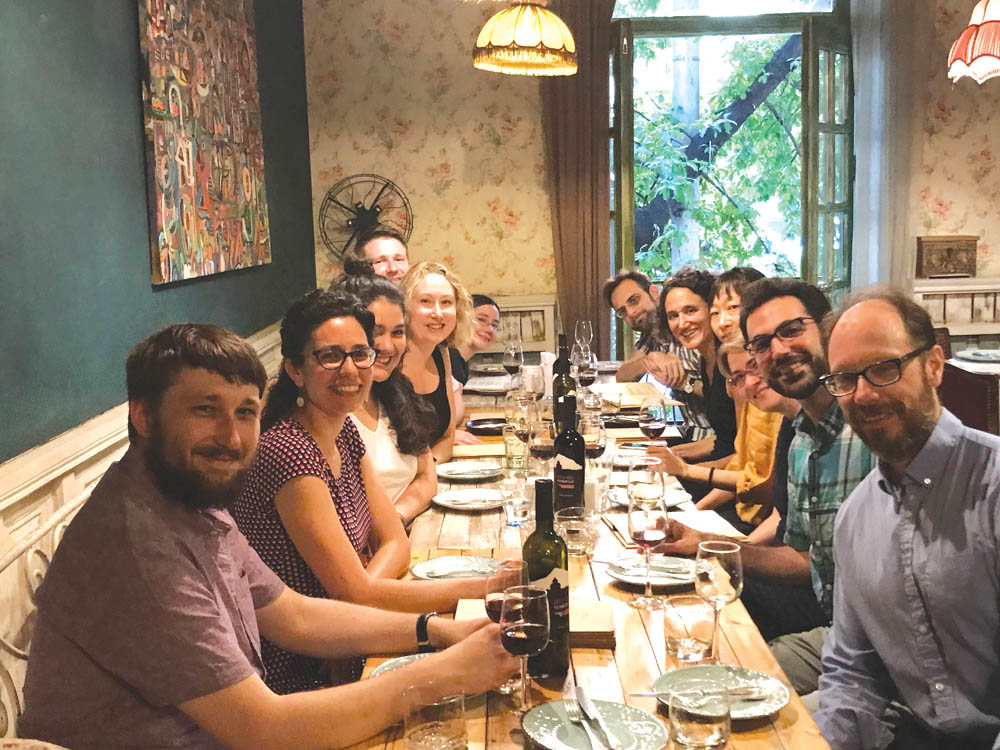
Staff Report
This year marked the second Fresno Institute for Classical Armenian Translation Summer Institute (FICAT). Following upon the success of last year’s FICAT institute held at Fresno State, the directors, Drs. Sergio La Porta and Michael Pifer, decided to lead students to work at the Matenadaran (the Mashtots Institute of Ancient Manuscripts) in Yerevan, Armenia this summer.
The FICAT program is financially supported by the Armenian Studies Program at Fresno State, through the M. Victoria Khanzadian Kazan Fund for Armenian Studies.
Eight students participated in a two-week intensive introduction to working with Armenian manuscripts from June 15-June 29. Students enjoyed the gracious accommodations of the Yerevan State University Guesthouse.
At the beginning of their stay, all of the students received reading cards and met with the Director of the Matenadaran, Dr. Vahan Ter-Ghevondyan. While there, the students examined manuscripts either related to their theses or for new publications.
Student Erin Piñon of Princeton University “was able to lay the groundwork for my dissertation research, by becoming familiar with the collection and seeing manuscripts that will form key parts of my study.”
While according to student Kayla Dang of Yale University, “we all settled into a routine of research and fellowship, and had the chance to meet important scholars—not only those based at the Matenadaran in Yerevan, but also those who visit there from academic institutions around the world in order to do their own research in the summers.”
In order to facilitate interactions between the students and scholars in Armenia, they attended three lectures by the faculty of the Matenadaran on different subjects. Dr. Gohar Muradyan spoke on the making of Armenian manuscripts and the history of the Matenadaran’s collection; Dr. Lusine Sargsyan provided an introduction to Armenian illuminated manuscripts; and Dr. Garnik Harutyunyan described the development of the Armenian lawcode and its significance for Armenian ecclesiastical history.
For South Korean researcher, Dr. Seonyoung Kim, “the lectures from experts, covering the fields of the study of manuscripts, miniatures, and Armenian Canon law were also quite helpful to enhance my understanding of Armenian manuscript/miniature studies and theology.”
In addition to learning about Armenian manuscripts and the challenges and opportunities working with them presents, FICAT students were exposed to everyday life in the Republic of Armenia as well as to historic places such as Khor Virap, Dilijan, Tat‘ev, and Lake Sevan.
Michael Burling, a doctoral candidate at the University of Birmingham, said that “I also took the opportunity to visit some of the sites with which I had become familiar through my research; a personal highlight for me was visiting Zvart‘nots‘.”
The directors considered the trip a tremendous success. Dr. La Porta said that “it is a terrific feeling to introduce students to Armenia for the first time and witness their excitement. Dr. Michael Pifer and myself both experienced how much the students progressed in their Classical Armenian through working at the Matenadaran; we are excited to see how their research will emerge in their dissertations and published articles.”
According to Dr. La Porta, the group is currently discussing plans for their next meeting in the summer of 2020.
 Hye Sharzhoom Armenian Action
Hye Sharzhoom Armenian Action